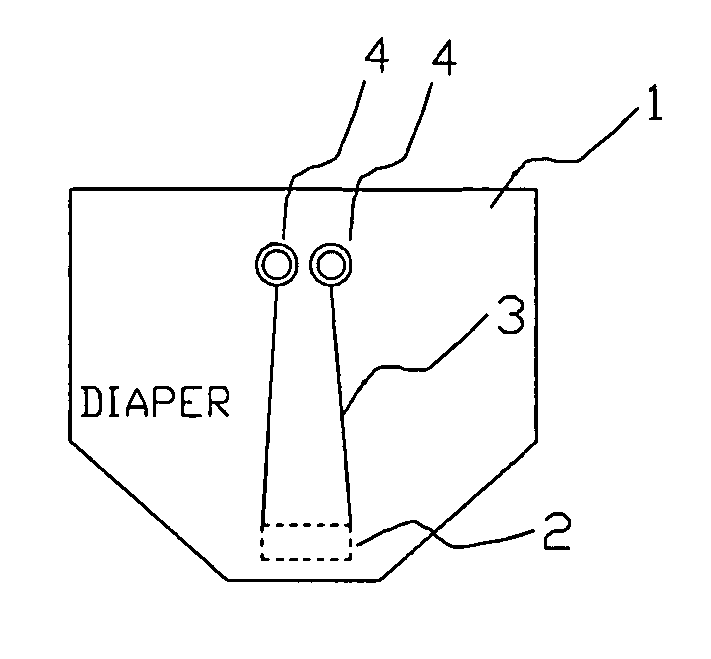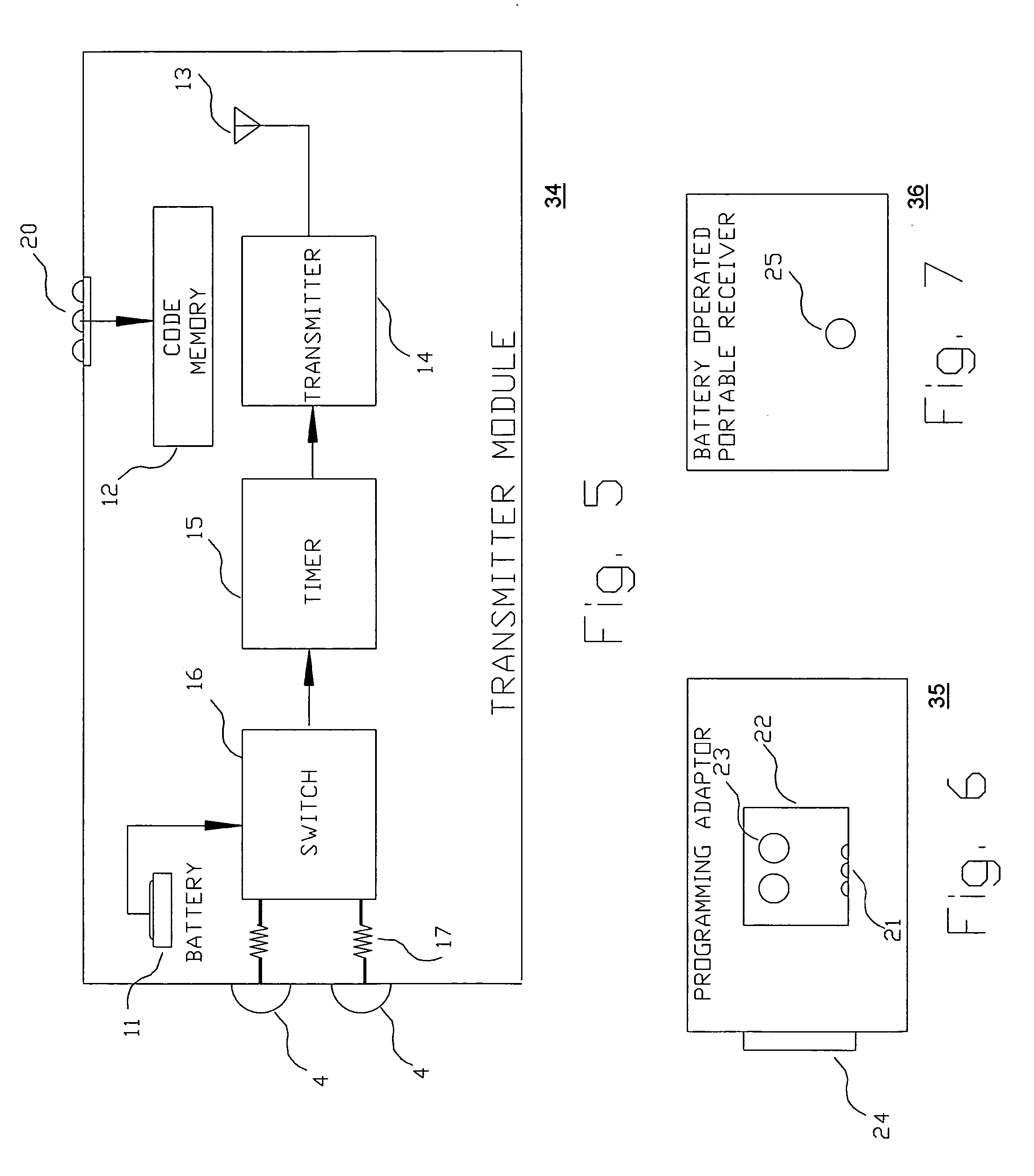Diaper wetness annunciator system
a wetness annunciator and wetness technology, applied in the field of wetness annunciator systems, can solve the problems of high cost, unsatisfactory task, and consume hospital limited human resources, and achieve the effect of saving system cost and easy washing and disinfection
- Summary
- Abstract
- Description
- Claims
- Application Information
AI Technical Summary
Benefits of technology
Problems solved by technology
Method used
Image
Examples
Embodiment Construction
[0046]FIG. 1 is a simplified schematic representation of a diaper 1 equipped with a humidity sensor 2. The diaper has two metal snaps 4 that, in this embodiment, are similar to the ones conventionally used on clothing. The snaps are connected to the humidity sensor by means of two fine enameled copper wires 3 embedded in the fabric of the diaper so they do are not visible from the outside and do not make physical contact with the body of the person wearing the diaper. The diaper, in this specific illustrative embodiment of the invention, contains the female portion of the snaps.
[0047]FIG. 2 is a simplified schematic representation of diaper 1 of FIG. 1 with a transmitter module 5 attached to it. Module 5, is only about an inch square. Module 5 is, in this embodiment, hermetically sealed and without hidden pockets capable of harboring germs. It is made of a plastic material capable of being sterilized. In this specific illustrative embodiment of the invention the module contains the...
PUM
 Login to View More
Login to View More Abstract
Description
Claims
Application Information
 Login to View More
Login to View More - R&D
- Intellectual Property
- Life Sciences
- Materials
- Tech Scout
- Unparalleled Data Quality
- Higher Quality Content
- 60% Fewer Hallucinations
Browse by: Latest US Patents, China's latest patents, Technical Efficacy Thesaurus, Application Domain, Technology Topic, Popular Technical Reports.
© 2025 PatSnap. All rights reserved.Legal|Privacy policy|Modern Slavery Act Transparency Statement|Sitemap|About US| Contact US: help@patsnap.com



